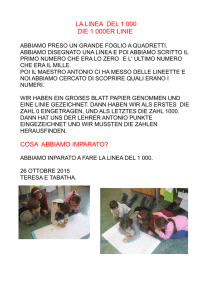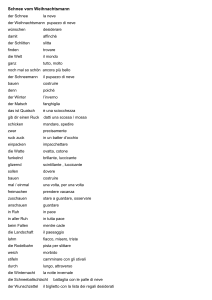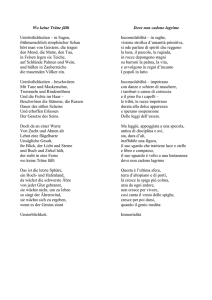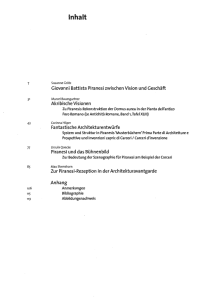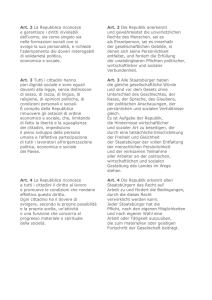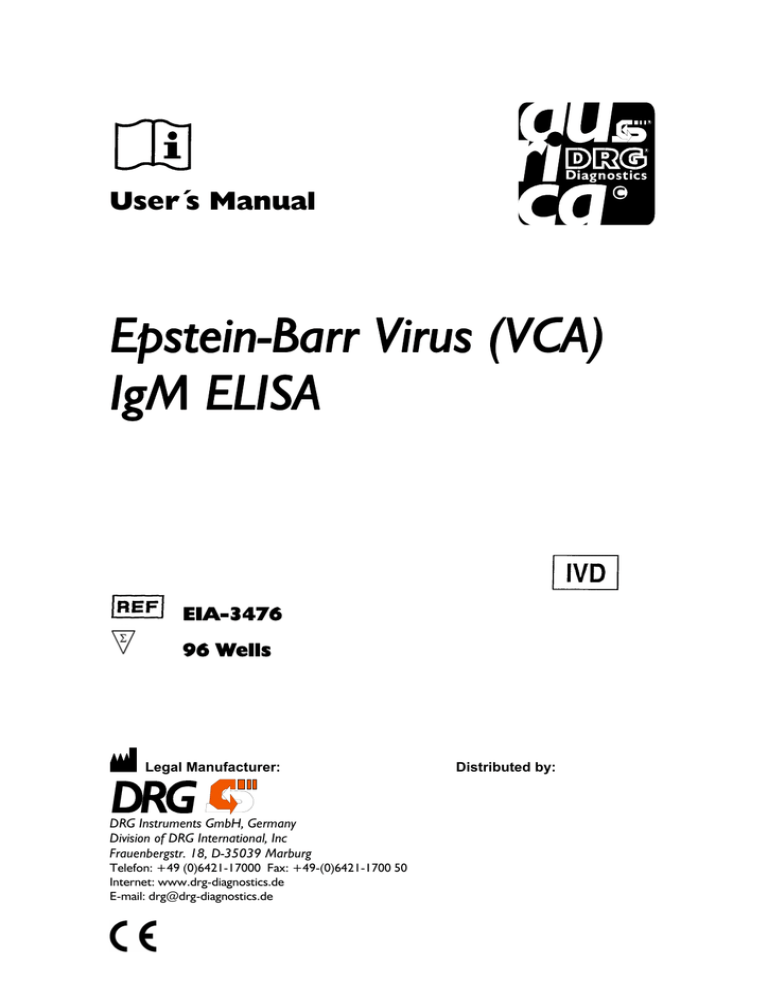
User´s Manual
Epstein-Barr Virus (VCA)
IgM ELISA
EIA-3476
96 Wells
Legal Manufacturer:
DRG Instruments GmbH, Germany
Division of DRG International, Inc
Frauenbergstr. 18, D-35039 Marburg
Telefon: +49 (0)6421-17000 Fax: +49-(0)6421-1700 50
Internet: www.drg-diagnostics.de
E-mail: [email protected]
Distributed by:
DRG Epstein-Barr Virus (VCA) IgM ELISA
Contents / Inhaltsverzeichnis / Contenuti
1 2 3 4 5 6 7 8 9 10 11 12 INTRODUCTION ............................................... 2 PRINCIPLE OF THE TEST ............................... 2 WARNINGS AND PRECAUTIONS.................... 3 KIT COMPONENTS .......................................... 4 SPECIMEN ........................................................ 5 ASSAY PROCEDURE ....................................... 6 RESULTS .......................................................... 8 QUALITY CONTROL ......................................... 8 ASSAY CHARACTERISTICS ............................ 9 LIMITATIONS OF USE ...................................... 9 LEGAL ASPECTS ............................................. 9 REFERENCES / LITERATURE ......................... 9
1 2 3 4 5 6 7 8 9 10 11 12 EINLEITUNG ................................................... 10 TESTPRINZIP ................................................. 10 VORSICHTSMAßNAHMEN ............................. 10 BESTANDTEILE DES KITS ............................ 11 PROBENVORBEREITUNG ............................. 12 TESTDURCHFÜHRUNG................................. 13 ERGEBNISSE ................................................. 15 QUALITÄTS-KONTROLLE .............................. 15 ASSAY CHARACTERISTIKA .......................... 16 GRENZEN DES TESTES ................................ 16 RECHTLICHE GRUNDLAGEN ....................... 16 REFERENZEN / LITERATUR ......................... 16
1 2 3 4 5 6 7 8 9 10 11 12 INTRODUZIONE ............................................. 17 PRINCIPIO DEL TEST .................................... 17 PRECAUZIONI ................................................ 17 COMPONENTI DEL KIT .................................. 18 CAMPIONI ....................................................... 19 ATTUAZIONE DEL TEST ................................ 20 RISULTATI ...................................................... 22 CONTROLLO QUALITÀ .................................. 22 CARATTERISTICHE DEL TEST ..................... 23 LIMITAZIONI ................................................... 23 ASPETTI LEGALI ............................................ 23 BIBLIOGRAFIA ................................................ 23
SYMBOLS USED WITH DRG ELISAS ..................... 24
SHORT INSTRUCTIONS FOR USE ......................... 25 Vers. 10.0
Effective 2012/04 – sl
-1-
EIA-3476
DRG Epstein-Barr Virus (VCA) IgM ELISA
1
EIA-3476
English
INTRODUCTION
1.1 Intended Use
The DRG Epstein-Barr Virus (VCA) IgM Enzyme Immunoassay Kit provides materials for the qualitative
and semiquantitative determination of IgM-class antibodies to Epstein-Barr viral capsid antigen in serum.
This assay is intended for in vitro diagnostic use only.
1.2 Summary and Explanation
Epstein-Barr Virus (EBV) is a member of the herpesvirus family (Gamma subgroup, DNA virus of 120-200
nm) and one of the most common human viruses. The virus occurs worldwide, and most people become
infected with EBV sometime during their lives. Transmission of the virus is almost impossible to prevent
since many healthy people can carry and spread the virus intermittently for life. Infants become susceptible
to EBV as soon as maternal antibody protection disappears. Infection of children usually causes no
symptoms. Infection during adolescence or young adulthood causes infectious mononucleosis 35% to 50%
of the time.
Infectious mononucleosis is almost never fatal. There are no known associations between active EBV
infection and problems during pregnancy, such as miscarriages or birth defects. Although the symptoms of
infectious mononucleosis usually resolve in 1 or 2 months, EBV remains dormant or latent in a few cells in
the throat and blood for the rest of the person’s life. Periodically, the virus can reactivate and is commonly
found in the saliva of infected persons. This reactivation usually occurs without symptoms of illness.
EBV also establishes a lifelong dormant infection in some cells of the body’s immune system. A late event in
a very few carriers of this virus is the emergence of Burkitt´s lymphoma and nasopharyngeal carcinoma, but
EBV is probably not the sole cause of these malignancies.
2 PRINCIPLE OF THE TEST
The DRG Epstein-Barr Virus (VCA) IgM ELISA Kit is a solid phase enzyme-linked immunosorbent assay
(ELISA)
Patient samples are diluted with Sample Diluent and additionally incubated with IgG-RF-Sorbent, containing
hyper-immune anti-human IgG-class antibody to eliminate competitive inhibition from specific IgG and to
remove rheumatoid factors. This pretreatment avoids false negative or false positive results.
Microtiter wells as a solid phase are coated with inactivated Epstein-Barr viral capsid antigen.
Pretreated patient specimens and ready-for-use controls are pipetted into these wells. During incubation
Epstein-Barr viral capsid antigen-specific antibodies of positive specimens and controls are bound to the
immobilized antigens.
After a washing step to remove unbound sample and control material horseradish peroxidase conjugated
anti-human IgM antibodies are dispensed into the wells. During a second incubation this anti-IgM conjugate
binds specifically to IgM antibodies resulting in the formation of enzyme-linked immune complexes.
After a second washing step to remove unbound conjugate the immune complexes formed (in case of
positive results) are detected by incubation with TMB substrate and development of a blue color. The blue
color turns into yellow by stopping the enzymatic indicator reaction with sulfuric acid.
The intensity of this color is directly proportional to the amount of Epstein-Barr viral capsid antigen-specific
IgM antibody in the patient specimen. Absorbance at 450 nm is read using an ELISA microtiter plate reader.
Vers. 10.0
Effective 2012/04 – sl
-2-
DRG Epstein-Barr Virus (VCA) IgM ELISA
3
EIA-3476
WARNINGS AND PRECAUTIONS
This kit is for in vitro diagnostic use only. For professional use only.
Before starting the assay, read the instructions completely and carefully. Use the valid version of the
package insert provided with the kit. Be sure that everything is understood.
All reagents of this test kit which contain human serum or plasma have been tested and confirmed
negative for HIV I/II, HBsAg and HCV by FDA approved procedures. All reagents, however, should be
treated as potential biohazards in use and for disposal.
Avoid contact with Stop Solution containing 0.2 mol/L H2SO4. It may cause skin irritation and burns.
TMB substrate has an irritant effect on skin and mucosa. In case of possible contact, wash eyes with an
abundant volume of water and skin with soap and abundant water. Wash contaminated objects before
reusing them. If inhaled, take the person to open air.
The microplate contains snap-off strips. Unused wells must be stored at 2 °C to 8 °C in the sealed foil
pouch and used in the frame provided
Pipetting of samples and reagents must be done as quickly as possible and in the same sequence for
each step.
Use reservoirs only for single reagents. This especially applies to the substrate reservoirs. Using a
reservoir for dispensing a substrate solution that had previously been used for the conjugate solution may
turn solution colored. Do not pour reagents back into vials as reagent contamination may occur.
Mix the contents of the microplate wells thoroughly to ensure good test results. Do not reuse microwells.
Do not let wells dry during assay; add reagents immediately after completing the rinsing steps.
Allow the reagents to reach room temperature (21 °C – 26 °C) before starting the test. Temperature will
affect the absorbance readings of the assay. However, values for the patient samples will not be
affected.
Never pipette by mouth and avoid contact of reagents and specimens with skin and mucous membranes.
Do not smoke, eat, drink or apply cosmetics in areas where specimens or kit reagents are handled.
Wear disposable latex gloves when handling specimens and reagents. Microbial contamination of
reagents or specimens may give false results.
Handling should be in accordance with the procedures defined by an appropriate national biohazard
safety guideline or regulation.
Do not use reagents beyond expiry date as shown on the kit labels.
All indicated volumes have to be performed according to the protocol. Optimal test results are only
obtained when using calibrated pipettes and microtiter plate readers.
Do not mix or use components from kits with different lot numbers. It is advised not to exchange wells of
different plates even of the same lot. The kits may have been shipped or stored under different conditions
and the binding characteristics of the plates may result slightly different.
Chemicals and prepared or used reagents have to be treated as hazardous waste according the national
biohazard safety guideline or regulation.
For information on hazardous substances included in the kit please refer to Safety Data Sheets.
Safety Data Sheets for this product are available upon request directly from DRG.
Vers. 10.0
Effective 2012/04 – sl
-3-
DRG Epstein-Barr Virus (VCA) IgM ELISA
4
EIA-3476
KIT COMPONENTS
4.1 Contents of the Kit
1. Microtiterwells, 12 x 8 (break apart) strips, 96 wells;
Wells coated with Epstein-Barr viral capsid antigen.
(incl. 1 strip holder and 1 cover foil)
2.
Sample Diluent *, 1 vial, 100 mL, ready to use,.
colored yellow; pH 7.2 ± 0.2.
Contains anti-human IgG-class antibody.
3.
IgG-RF-Sorbent*, 1 vial, 6.5 mL, ready to use,
colored yellow;
Contains anti-human IgG-class antibody.
4.
Pos. Control *, 1 vial, 1.0 mL, ready to use;
colored yellow, red cap.
5.
Neg. Control *, 1 vial, 2.0 mL, ready to use;
colored yellow, yellow cap.
6.
Cut-off Control *, 1 vial, 2.0 mL, ready to use;
colored yellow, black cap.
7.
Enzyme Conjugate *, 1 vial, 20 mL, ready to use,
colored red,
antibody to human IgM conjugated to horseradish peroxidase.
8.
Substrate Solution, 1 vial, 14 mL, ready to use,
Tetramethylbenzidine (TMB).
9.
Stop Solution, 1 vial, 14 mL, ready to use,
contains 0.2 mol/L H2SO4,
Avoid contact with the stop solution. It may cause skin irritations and burns.
10. Wash Solution *, 1 vial, 30 mL (20X concentrated for 600 mL), pH 6.5 0.1
see „Preparation of Reagents“.
*
contain non-mercury preservative
4.1.1
Material required but not provided
A microtiter plate calibrated reader (450/620nm ±10 nm)
(e.g. the DRG Instruments Microtiter Plate Reader)
Calibrated variable precision micropipettes
Incubator 37 °C
Manual or automatic equipment for rinsing wells
Vortex tube mixer
Deionised or (freshly) distilled water
Timer
Absorbent paper
4.2 Storage Conditions and stability of the Kit
When stored at 2 °C to 8 °C unopened reagents will retain reactivity until expiration date. Do not use
reagents beyond this date.
Opened reagents must be stored at 2 °C to 8 °C. Microtiter wells must be stored at 2 °C to 8 °C. Once the
foil bag has been opened, care should be taken to close it tightly again.
Opened kits retain activity for two months if stored as described above.
Vers. 10.0
Effective 2012/04 – sl
-4-
DRG Epstein-Barr Virus (VCA) IgM ELISA
EIA-3476
4.3 Reagent Preparation
Allow all reagents and required number of strips to reach room temperature prior to use.
Wash Solution
Dilute Wash Solution 1+19 (e.g. 10 mL + 190 mL) with fresh and germ free redistilled water. This diluted
wash solution has a pH value of 7.2 ± 0.2.
Consumption: ~ 5 mL per determination.
Crystals in the solution disappear by warming up to 37 °C in a water bath. Be sure that the crystals are
completely dissolved before use.
The diluted Wash Solution is stable for 4 weeks at 2 °C to 8 °C.
4.4 Disposal of the Kit
The disposal of the kit must be made according to the national regulations. Special information for this
product is given in the Material Safety Data Sheets.
4.5 Damaged Test Kits
In case of any severe damage to the test kit or components, DRG has to be informed in writing, at the latest,
one week after receiving the kit. Severely damaged single components should not be used for a test run.
They have to be stored until a final solution has been found. After this, they should be disposed according to
the official regulations.
5 SPECIMEN
Serum can be used in this assay.
Do not use haemolytic, icteric or lipaemic specimens.
5.1 Specimen Collection
Serum:
Collect blood by venipuncture (e.g. Sarstedt Monovette # 02.1388.001), allow to clot, and separate serum by
centrifugation at room temperature. Do not centrifuge before complete clotting has occurred. Patients
receiving anticoagulant therapy may require increased clotting time.
5.2 Specimen Storage
Specimens should be capped and may be stored for up to 24 hours at 2 °C to 8 °C prior to assaying.
Specimens held for a longer time should be frozen only once at –20 °C prior to assay. Thawed samples
should be inverted several times prior to testing.
5.3 Specimen Dilution
Prior to assaying each patient specimen is first to be diluted with Sample Diluent. For the absorption of
rheumatoid factor these prediluted samples then have to be incubated with IgG-RF-Sorbent
1. Dilute each patient specimen 1+50 with Sample Diluent;
e.g. 10 µL of specimen + 0.5 mL of Sample Diluent. Mix well.
2. Dilute this prediluted sample 1+1 with IgG-RF-Sorbent
e.g. 60 µL prediluted sample + 60 µL IgG-RF-Sorbent. Mix well
3. Let stand for at least 15 minutes at room temperature or
over night at 2°- 8°C and mix well again.
4. Take 100 µL of these pretreated samples for the ELISA.
Please note: Controls are ready for use and must not be diluted!
Vers. 10.0
Effective 2012/04 – sl
-5-
DRG Epstein-Barr Virus (VCA) IgM ELISA
6
6.1
EIA-3476
ASSAY PROCEDURE
General Remarks
It is very important to bring all reagents, samples and controls to room temperature before
starting the test run!
Once the test has been started, all steps should be completed without interruption.
Use new disposal plastic pipette tips for each standard, control or sample in order to avoid cross
contamination
Absorbance is a function of the incubation time and temperature. Before starting the assay, it is
recommended that all reagents are ready, caps removed, all needed wells secured in holder, etc. This will
ensure equal elapsed time for each pipetting step without interruption.
As a general rule the enzymatic reaction is linearly proportional to time and temperature.
Close reagent vials tightly immediately after use to avoid evaporation and microbial contamination.
To avoid cross-contamination and falsely elevated results pipette patient samples and dispense
conjugate without splashing accurately to the bottom of wells.
During incubation cover microtiter strips with foil to avoid evaporation.
Vers. 10.0
Effective 2012/04 – sl
-6-
DRG Epstein-Barr Virus (VCA) IgM ELISA
EIA-3476
6.2 Test Procedure
Prior to commencing the assay, dilute Wash Solution, prepare patient samples as described in point 5.3
and establish carefully the distribution and identification plan supplied in the kit for all specimens and
controls.
1. Select the required number of microtiter strips or wells and insert them into the holder.
Please allocate at least:
1 well
(e.g. A1)
1 well
(e.g. B1)
2 wells
(e.g. C1+D1)
1 well
(e.g. E1)
for the substrate blank,
for the Neg. Control,
for the Cut-off Control
for the Pos. Control.
and
It is left to the user to determine controls and patient samples in duplicate.
2.
Dispense
100 µL of Neg. Control
into well B1
100 µL of Cut-off Control into wells C1 and D1
100 µL of Pos. Control
into well E1
and
100 µL of each p r e t r e a t e d sample with new disposable tips into appropriate wells.
Leave well A1 for substrate blank!
3.
Cover wells with foil supplied in the kit. Incubate for 60 minutes at 37 °C.
4.
Briskly shake out the contents of the wells.
Rinse the wells 5 times with diluted Wash Solution (300 µL per well). Strike the wells sharply on
absorbent paper to remove residual droplets.
Important note:
The sensitivity and precision of this assay is markedly influenced by the correct performance of the
washing procedure!
5.
Dispense 100 µL Enzyme Conjugate into each well, except A1.
6.
Incubate for 30 minutes at room temperature (20 °C to 25 °C).
Do not expose to direct sun light!
7.
Briskly shake out the contents of the wells.
Rinse the wells 5 times with diluted Wash Solution (300 µL per well). Strike the wells sharply on
absorbent paper to remove residual droplets.
8.
Add 100 µL of Substrate Solution into all wells.
9.
Incubate for exactly 15 minutes at room temperature (20 °C to 25 °C) in the dark.
10. Stop the enzymatic reaction by adding 100 µL of Stop Solution to each well.
Any blue color developed during the incubation turns into yellow.
Note: Highly positive patient samples can cause dark precipitates of the chromogen!
11. Read the optical density at 450/620 nm with a microtiter plate reader within 30 minutes after adding
the Stop Solution.
6.3 Measurement
Adjust the ELISA microplate or microstrip reader to zero using the substrate blank in well A1.
If - due to technical reasons - the ELISA reader cannot be adjusted to zero using the substrate blank in well
A1, subtract the absorbance value of well A1 from all other absorbance values measured in order to obtain
reliable results!
Measure the absorbance of all wells at 450 nm and record the absorbance values for each control and
patient sample in the distribution and identification plan.
Dual wavelength reading using 620 nm as reference wavelength is recommended.
Where applicable calculate the mean absorbance values of all duplicates.
Vers. 10.0
Effective 2012/04 – sl
-7-
DRG Epstein-Barr Virus (VCA) IgM ELISA
7
EIA-3476
RESULTS
7.1 Validation of the Test Run
The test run may be considered valid provided the following criteria are met:
Substrate blank in A1:
Absorbance value lower than 0.100
Neg. Control in B1:
Absorbance value lower than 0.200
Cut-off Control in C1/D1 :
Absorbance value between 0.350 – 0.850
Pos. Control in E1:
Absorbance value between 0.650 – 3.000
7.2
Calculation
Mean absorbance value of Cut-off Control CO
Calculate the mean absorbance value of the two (2) Cut-off Control determinations (e.g. in C1/D1).
Example: (0.49 + 0.51) : 2 = 0.50 = CO
7.3 Interpretation
POSITIVE
Patient (mean) absorbance values more than 10 % above CO
(Mean OD patient > 1.1 x CO)
GREY ZONE
Patient (mean) absorbance values from 10 % above to 10 % below CO
repeat test 2 - 4 weeks later - with new patient samples
(0.9 x CO ≤ Mean OD patient ≤ 1.1 x CO)
Results in the second test again in the grey zone NEGATIVE
NEGATIVE
7.3.1
Patient (mean) absorbance values more than 10 % below CO
(Mean OD patient < 0.9 x CO)
Results in DRG Units [DU]
Patient (mean) absorbance value x 10
CO
Example:
1.580 x 10
0.50
= [DRG Units = DU]
= 32 DU
Interpretation of Results
Cut-off value:
10 DU
Grey zone:
9 - 11 DU
Negative:
< 9 DU
Positive:
> 11 DU
8 QUALITY CONTROL
It is recommended to use control samples according to state and federal regulations. The use of control
samples is advised to assure the day to day validity of results. Use controls at both normal and pathological
levels.
It is also recommended to make use of national or international Quality Assessment programs in order to
ensure the accuracy of the results.
If the results of the assay do not fit to the established acceptable ranges of control materials patient results
should be considered invalid.
In this case, please check the following technical areas: Pipetting and timing devices; photometer, expiration
dates of reagents, storage and incubation conditions, aspiration and washing methods.
After checking the above mentioned items without finding any error contact your distributor or DRG directly.
Vers. 10.0
Effective 2012/04 – sl
-8-
DRG Epstein-Barr Virus (VCA) IgM ELISA
9
EIA-3476
ASSAY CHARACTERISTICS
9.1 Diagnostic Specificity
The diagnostic specificity is defined as the probability of the assay of scoring negative in the absence of the
specific analyte.
It is 98.3 %.
9.2 Diagnostic Sensitivity
The diagnostic sensitivity is defined as the probability of the assay of scoring positive in the presence of the
specific analyte.
It is 100 %.
10 LIMITATIONS OF USE
Bacterial contamination or repeated freeze-thaw cycles of the specimen may affect the absorbance values.
In immunocompromised patients and newborns serological data only have restricted value.
11 LEGAL ASPECTS
11.1 Reliability of Results
The test must be performed exactly as per the manufacturer’s instructions for use. Moreover the user must
strictly adhere to the rules of GLP (Good Laboratory Practice) or other applicable national standards and/or
laws. This is especially relevant for the use of control reagents. It is important to always include, within the
test procedure, a sufficient number of controls for validating the accuracy and precision of the test.
The test results are valid only if all controls are within the specified ranges and if all other test parameters are
also within the given assay specifications. In case of any doubt or concern please contact DRG.
11.2 Therapeutical Consequences
Therapeutical consequences should never be based on laboratory results alone even if all test results are in
agreement with the items as stated under point 11.1. Any laboratory result is only a part of the total clinical
picture of a patient.
Diagnosis of an infectious disease should not be established on the basis of a single test result. A precise
diagnosis should take into consideration clinical history, symptomatology as well as serological data.
Only in cases where the laboratory results are in acceptable agreement with the overall clinical picture of the
patient should therapeutical consequences be derived.
The test result itself should never be the sole determinant for deriving any therapeutical consequences.
11.3 Liability
Any modification of the test kit and/or exchange or mixture of any components of different lots from one test
kit to another could negatively affect the intended results and validity of the overall test. Such modification
and/or exchanges invalidate any claim for replacement.
Claims submitted due to customer misinterpretation of laboratory results subject to point 11.2. are also
invalid. Regardless, in the event of any claim, the manufacturer’s liability is not to exceed the value of the
test kit. Any damage caused to the test kit during transportation is not subject to the liability of the
manufacturer.
12 REFERENCES / LITERATURE
1. Lamy ME., Favart AM., Cornu A. et al., “Study of Epstein-Barr virus (EBV) antibodies: IgG and IgM antiVCA, IgG anti EA and Ig anti-EBNA obtained with an original microtiter technique. Serological criterions
of primary and recurrents EBV infections and follow-up of infectious mononucleosis. Seroepidemiology
of EBV in Belgium based on 5178 sera from patients”. Acta Clin. Belg., 37 (5): 281-298, (1982)
2. Lennette E., „Epstein-Barr Virus“, in Manual of Clinical Microbiology, 4th ed. Washington D.C.,
Am. Soc. Microbiol. P 728-732, (1985)
3. Luka J., chase PC., Pearson GR., “A sensitive enzyme-linked Immunosorbent assay (ELISA) against
the major EBV-associated antigens. I-Correlation between ELISA and immunofluorescence titers using
purified antigens”, J. Immunol. Metho., 67: 145-156, (1984)
Vers. 10.0
Effective 2012/04 – sl
-9-
DRG Epstein-Barr Virus (VCA) IgM ELISA
EIA-3476
Deutsch
1 EINLEITUNG
Der DRG Epstein-Barr Virus (VCA) IgM ELISA wird zum qualitativen und semiquantitativen Nachweis von
IgM-Antikörpern gegen Epstein-Barr viral capsid Antigen in Humanserum eingesetzt.
Nur für In-vitro Diagnostik.
2 TESTPRINZIP
Der DRG Epstein-Barr Virus (VCA) IgM ELISA ist ein Festphasen-Enzymimmunoassay.
In einem dem Testablauf vorangehenden vorbereitenden Schritt werden die Patientenproben mit Sample
Diluent verdünnt und zusätzlich mit IgG-RF-Sorbent inkubiert.
Durch die Verwendung von Anti-human-IgG-Antikörpern im IgG-RF-Sorbent werden gleichzeitig hemmende
kompetitive Bindungen durch spezifische IgG-Antikörper und Rheumafaktoren verhindert.
Diese Probenvorbehandlung verhindert falsch positive oder negative Ergebnisse.
Vertiefungen einer Mikrotiterplatte als Festphase sind mit inactiviertem Epstein-Barr viral capsid-Antigen
beschichtet. In diese Vertiefungen werden verdünnte Patientenproben und gebrauchsfertige Kontrollen
pipettiert.
Während der darauf folgenden Inkubation werden Epstein-Barr viral capsid Antigen-spezifische Antikörper
positiver Proben und Kontrollen an die immobilisierten Antigene gebunden.
Nach einem Waschvorgang zur Entfernung von nicht gebundenem Kontroll- und Probenmaterial wird Antihuman-IgM-Meerrettichperoxidase-Konjugat zugegeben, das sich während einer weiteren Inkubation
spezifisch an IgM-Antikörper bindet und dadurch zur Bildung enzymmarkierter Immunkomplexe führt.
Durch einen zweiten Waschvorgang wird ungebundenes Konjugat entfernt.
Die (bei positiven Resultaten) gebildeten Immunkomplexe werden durch Inkubation mit TMB-Substrat
anhand einer blauen Farbreaktion, die nach Abstoppen der enzymatischen Reaktion mit Schwefelsäure in
gelb umschlägt, sicht- und messbar gemacht.
Die Intensität der gebildeten Farbe ist der Anti-Epstein-Barr viral capsid Antigen-Antikörpermenge in der
Patientenprobe direkt proportional.
Die Extinktionsmessung bei 450 nm erfolgt mit einem Mikrotiterplatten-Photometer (ELISA-Reader).
3 VORSICHTSMAßNAHMEN
Dieser Kit ist nur zum in vitro diagnostischen Gebrauch geeignet.
Nur die gültige, im Testkit enthaltene, Arbeitsanleitung verwenden.
Informationen zu im Kit enthaltenen gefährlichen Substanzen entnehmen Sie bitte dem
Materialsicherheitsdatenblatt.
Alle Bestandteile dieses Testkits, die humanes Serum oder Plasma enthalten, wurden mit FDA-geprüften
Methoden auf HIV I/II, HbsAg und HCV getestet und als negativ bestätigt. Jedoch sollten alle
Bestandteile im Umgang und bei der Entsorgung wie mögliche Gefahrenstoffe betrachtet werden.
Der Kontakt mit der Stop Solution sollte vermieden werden, da sie 0,2 mol/L H2SO4 enthält.
Schwefelsäure kann Hautreizungen und Verbrennungen verursachen.
Nicht mit dem Mund pipettieren und den Kontakt von Kitbestandteilen und Proben mit Haut und
Schleimhäuten vermeiden.
In den Bereichen, in denen Proben oder Kitbestandteile verwendet werden, nicht rauchen, essen oder
Kosmetika verwenden.
Beim Umgang mit Proben oder Reagenzien Einweg-Latexhandschuhe tragen. Die Verunreinigung von
Reagenzien oder Proben mit Mikroben kann zu falschen Ergebnissen führen.
Der Gebrauch sollte gemäß der Vorschriften einer entsprechenden nationalen GefahrenstoffSicherheitsrichtlinie erfolgen.
Reagenzien nicht nach dem auf dem Kit-Etikett angegebenen Verfallsdatum verwenden.
Alle im Kit-Protokoll angegebenen Mengen müssen genau eingehalten werden. Optimale Ergebnisse
können nur durch Verwendung kalibrierter Pipetten und Mikrotiterplatten-Lesegeräte erreicht werden.
Komponenten von Kits mit unterschiedlichen Lotnummern nicht untereinander vertauschen. Es wird
empfohlen, keine Wells von verschiedenen Platten zu verwenden, auch nicht, wenn es sich um das
gleiche Lot handelt. Die Kits können unter anderen Bedingungen gelagert oder versendet worden sein, so
dass die Bindungscharakteristik der Platten leicht unterschiedlich ausfällt.
Chemikalien und zubereitete oder bereits benutzte Reagenzien müssen gemäß den nationalen
Gefahrenstoffvorschriften wie gefährlicher Abfall behandelt werden.
Sicherheitsdatenblätter für dieses Produkt sind auf Anfrage direkt von der Firma DRG Instruments GmbH
erhältlich. Die Sicherheitsdatenblätter entsprechen den EU-Verordnungen.
Vers. 10.0
Effective 2012/04 – sl
- 10 -
DRG Epstein-Barr Virus (VCA) IgM ELISA
4
EIA-3476
BESTANDTEILE DES KITS
4.1 Kitinhalt
1. Microtiterwells, 96 Wells, 12x8 Wells (einzeln brechbar);
Mit Epstein-Barr viral capsid -Antigen beschichtet;
(inkl. 1 Streifenhalter und 1 Abdeckfolie)
2. Sample Diluent * (Probenverdünnungsmedium), 1 Fläschchen, 100 mL, gebrauchsfertig;
gelb gefärbt; pH 7,2 ± 0,2.
Enthält Anti-human-IgG.
3. IgG-RF-Sorbent*, 1 Fläschchen, 6.5 mL, gebrauchsfertig,
gelb gefärbt;
Enthält Anti-human-IgG.
4. Pos. Control * (Positive Kontrolle), 1 Fläschchen, 1,0 mL, gebrauchsfertig;
gelb gefärbt, rote Kappe.
5. Neg. Control * (Negative Kontrolle), 1 Fläschchen, 2,0 mL, gebrauchsfertig;
gelb gefärbt, gelbe Kappe.
6. Cut-off Control * (Grenzwert-Kontrolle), 1 Fläschchen, 2,0 mL, gebrauchsfertig;
gelb gefärbt, schwarze Kappe.
7. Enzyme Conjugate * (Enzymkonjugat), 1 Fläschchen, 20 mL, gebrauchsfertig;
rot gefärbt,.
Antikörper gegen humanes IgM, mit Meerrettichperoxidase konjugiert.
8. Substrate Solution (Substratlösung), 1 Fläschchen, 14 mL, gebrauchsfertig;
Tetramethylbenzidin (TMB).
9. Stop Solution (Stopplösung), 1 Fläschchen, 14 mL, gebrauchsfertig;
enthält 0,2 mol/L H2SO4;
Kontakt mit der Stopplösung vermeiden! Kann Hautreizungen und Verbrennungen verursachen.
10. Wash Solution * (Waschlösung), 1 Fläschchen, 30 mL, (20X konzentriert für 600 mL) pH 6.5 ± 0,1;
Siehe „Vorbereitung der Reagenzien“.
Enthält quecksilberfreies Konservierungsmittel
4.1.1
Nicht im Kit enthaltene aber erforderliche Geräte und Materialien
Kalibriertes Mikrotiterplattenlesegerät mit 450±10 nm Filter, (z.B. das DRG Instruments
Mikrotiterplattenlesegerät)
Kalibrierte variable Präzisions-Mikropipette
Inkubator 37 °C
Manuelle oder automatische Waschvorrichtung
Vortex-Mischer
Aqua dest.
Kurzzeitwecker
Saugfähiges Papier
4.2 Lagerung und Haltbarkeit des Kits
Die ungeöffneten Reagenzien behalten bei Lagerung um 2 °C bis 8 °C ihre Reaktivität bis zum
Verfallsdatum. Nach dem Verfallsdatum die Reagenzien nicht mehr verwenden.
Nach dem Öffnen sollten alle Reagenzien bei 2 °C bis 8 °C gelagert werden.
Die Microtiterwells sollten bei 2 °C bis 8 °C gelagert werden. Der einmal geöffnete Folienbeutel sollte stets
sehr sorgfältig wieder verschlossen werden. Unter den beschriebenen Lagerbedingungen behalten geöffnete
Kits zwei Monate ihre Reaktivität.
Vers. 10.0
Effective 2012/04 – sl
- 11 -
DRG Epstein-Barr Virus (VCA) IgM ELISA
EIA-3476
4.3 Vorbereitung der Reagenzien
Alle Reagenzien sowie die benötigte Anzahl von Wells sollen vor dem Gebrauch auf Raumtemperatur
gebracht werden.
Wash Solution
Waschlösung 1 + 19 (z.B. 10 mL + 190 mL) mit frischem, keimfreiem destilliertem Wasser verdünnen. Diese
verdünnte Waschlösung hat einen pH-Wert von 7,2 ± 0,2.
Bedarf: ca. 5 mL pro Bestimmung.
Kristalle in der Lösung durch Erwärmen im Wasserbad bei 37 °C auflösen. Es muss sichergestellt sein, dass
die Kristalle vollständig gelöst sind, bevor die Waschlösung verwendet wird.
Die verdünnte Waschlösung ist bei 2 °C bis 8 °C für 2 Wochen stabil.
4.4 Entsorgung des Kits
Die Entsorgung des Kits muss gemäß den nationalen gesetzlichen Vorschriften erfolgen. Spezielle
Informationen zu diesem Produkt finden Sie im Sicherheitsdatenblatt.
4.5 Beschädigte Testkits
Im Falle einer starken Beschädigung des Testkits oder der Komponenten muss die Firma DRG in
schriftlicher Form spätestens eine Woche nach Erhalt des Kits informiert werden. Stark beschädigte
Einzelkomponenten sollten nicht für den Testlauf verwendet werden. Sie müssen gelagert werden bis eine
endgültige Lösung gefunden wurde. Danach sollten Sie gemäß den offiziellen Richtlinien entsorgt werden.
5 PROBENVORBEREITUNG
Serum kann in diesem Test als Probenmaterial eingesetzt werden.
Lipämische, ikterische und/oder stark hämolysierte Proben sollten nicht verwendet werden.
5.1 Probenentnahme
Serum:
Blut durch Venenpunktion entnehmen (z.B. mit Sarstedt Monovette # 02.1388.001), gerinnen
lassen und das Serum durch Zentrifugation bei Raumtemperatur abtrennen. Vor der Zentrifugation muss die
Gerinnung vollständig abgeschlossen sein. Bei Patienten, die Antikoagulantien erhalten, kann die
Gerinnungszeit länger dauern.
5.2 Probenaufbewahrung
Proben sollten stets gut verschlossen sein und können vor Testbeginn bis zu 24 Stunden bei 2 °C bis 8 °C
gelagert werden.
Für eine längere Aufbewahrung sollten die Proben eingefroren, bei –20 °C, bis zum Testbeginn gelagert
werden. Nur einmal einfrieren. Aufgetaute Proben sollten vor Testbeginn vorsichtig durchmischt werden,
ohne Schaumbildung.
5.3 Probenverdünnung
Vor Testbeginn werden die Patientenproben zuerst mit Sample Diluent verdünnt. Anschließend werden
diese vorverdünten Proben mit IgG-RF-Sorbent inkubiert um Rheumafaktoren zu eliminieren.
1. Jede Patientenprobe 1+50 mit Sample Diluent verdünnen;
z.B. 10 µL Probe + 0.5 mL of Sample Diluent. Gut mischen.
2. Die vorverdünnte Probe 1+1 mit IgG-RF-Sorbent verdünnen
z.B. 60 µL vorverdünnte Probe + 60 µL IgG-RF-Sorbent. Gut mischen.
3. 15 Minuten bei Raumtemperatur oder über Nacht bei 2°- 8°C stehen lassen, danach nochmals gut
mischen.
4. 100 µL dieser vorverdünnten Probe werden in den ELISA eingesetzt.
Achtung: Die Kontrollen sind gebrauchsfertig und dürfen nicht verdünnt werden!
Vers. 10.0
Effective 2012/04 – sl
- 12 -
DRG Epstein-Barr Virus (VCA) IgM ELISA
6
6.1
EIA-3476
TESTDURCHFÜHRUNG
Allgemeine Hinweise
Es ist sehr wichtig, alle Reagenzien, Proben und Kontrollen vor ihrer Verwendung auf
Raumtemperatur zu bringen!
Wenn die Testdurchführung einmal begonnen wurde, muss sie ohne Unterbrechung zu Ende geführt
werden.
Für jeden Standard, jede Kontrolle oder Probe eine neue Plastikspitze verwenden, um Verschleppungen
zu vermeiden.
Die Optische Dichte ist abhängig von Inkubationszeit und Temperatur. Deshalb ist es notwendig, vor
Beginn der Testdurchführung alle Reagenzien in einen arbeitsbereiten Zustand zu bringen, die Deckel
der Fläschchen zu öffnen, alle benötigten Wells in den Halter zu setzen. Nur eine solche Vorbereitung
garantiert gleiche Zeiten für jeden Pipettiervorgang ohne Pausen.
Als generelle Regel gilt, dass die enzymatische Reaktion linear proportional zu Zeit und Temperatur ist.
Reagenzfläschchen sofort nach Gebrauch wieder sorgfältig verschließen, um Verdunstung und
mikrobielle Kontamination zu verhindern.
Die Patientenproben bzw. das Konjugat sorgfältig auf den Boden der Vertiefungen pipettieren bzw.
dispensieren (ohne den Rand zu benetzen!), um Kreuzkontaminationen und fälschlich erhöhte
Ergebnisse zu vermeiden.
Microtiterwells während der Inkubation durch Abdecken mit Abdeckfolie vor Verdunstung schützen.
Vers. 10.0
Effective 2012/04 – sl
- 13 -
DRG Epstein-Barr Virus (VCA) IgM ELISA
EIA-3476
6.2 Testdurchführung
Vor Beginn der Testdurchführung die Wash Solution verdünnen, die Patientenproben vorbereiten, wie
unter Punkt 5.3 beschrieben und auf dem mitgelieferten Übersichtsplan die Verteilung bzw. Position der
Patientenproben und Kontrollen auf den Mikrotiterstreifen zur sicheren Identifizierung genau festlegen.
1.
Die benötigte Anzahl von Mikrotiterstreifen in den Streifenhalter einsetzen.
Hierbei mindestens
1 Vertiefung
(z.B. A1)
für den Substratleerwert (Blank),
1 Vertiefung
(z.B. B1)
für die Neg. Control
2 Vertiefungen
(z.B. C1 + D1) für die Cut-off Control
und
1 Vertiefung
(z.B. E1)
für die Pos. Control vorsehen.
Es bleibt dem Anwender überlassen, zur höheren Sicherheit für die Kontrollen und die Patientenproben
Doppel- oder Mehrfachbestimmungen vorzusehen.
2.
100 µL Neg. Control
in
Vertiefung B1
je
100 µL Cut-off Control
in die Vertiefungen C1 und D1
100 µL Pos. Control
in
Vertiefung E1
und
100 µL jeder v o r b e h a n d e l t e n Patientenprobe mit neuen Plastikspitzen in die entsprechenden
Wells pipettieren.
Vertiefung A1 für den Substratleerwert (Blank) reservieren!
3.
Die Mikrotiterstreifen mit der dem Testkit beiliegenden Folie abdecken.
60 Minuten bei 37 °C inkubieren.
4.
Den Inhalt der Mikrotiterstreifen kräftig ausschütteln und 5-mal mit verdünnter Wash Solution
(300 µL pro Vertiefung) waschen. Verbleibende Flüssigkeit durch Ausklopfen der Mikrotiterstreifen auf
saugfähigem Papier entfernen.
Achtung: Die Sensitivität und Präzision dieses Testes wird erheblich beeinflusst von der korrekten
Durchführung des Waschschrittes!
5.
100 µL Enzyme-Conjugate in jede Vertiefung geben, außer in A1
6.
Die Mikrotiterstreifen 30 Minuten bei Raumtemperatur (20 °C bis 25 °C) inkubieren.
Testansatz nicht dem direkten Sonnenlicht aussetzen!
7.
Den Inhalt der Mikrotiterstreifen kräftig ausschütteln und 5mal mit verdünnter Wash Solution
(300 µL pro Vertiefung) waschen. Verbleibende Flüssigkeit durch Ausklopfen der Mikrotiterstreifen auf
saugfähigem Papier entfernen.
8.
100 µL Substrate Solution in jede Vertiefung geben.
9.
Die Mikrotiterstreifen 15 Minuten bei Raumtemperatur (20 °C bis 25 °C) im Dunkeln inkubieren
10. Die enzymatische Reaktion durch Zugabe von 100 µL Stop Solution in jede Vertiefung abstoppen.
Während der Inkubation gebildete blaue Farbe schlägt in gelb um.
Hinweis: Hoch positive Patientenproben können schwärzliche Präzipitate des Chromogens
verursachen!
11. Die Optische Dichte bei 450/620 nm mit einem Mikrotiterplatten-Lesegerät innerhalb von 30 Minuten
nach Zugabe der Stop Solution bestimmen.
6.3 Messung
Mit Hilfe des Substratleerwertes (Blank) in A1 den Nullabgleich des Mikrotiterplatten-Photometers
(ELISA-Readers) vornehmen.
Falls diese Kalibrierung aus technischen Gründen nicht möglich ist, muss nach der Messung der
Extinktionswert der Position A1 von allen anderen Extinktionswerten abgezogen werden, um einwandfreie
Ergebnisse zu erzielen!
Extinktion aller Vertiefungen bei 450 nm messen und die Messwerte der Kontrollen und Proben in den
Übersichtsplan eintragen.
Eine bichromatische Messung mit der Referenzwellenlänge 620 nm wird empfohlen.
Falls Doppel- oder Mehrfachbestimmungen durchgeführt wurden, den Mittelwert der Extinktionswerte
berechnen.
Vers. 10.0
Effective 2012/04 – sl
- 14 -
DRG Epstein-Barr Virus (VCA) IgM ELISA
7
EIA-3476
ERGEBNISSE
7.1 Qualitätskontrollkriterien und Testvalidität
Die Testdurchführung ist gültig, wenn folgende Kriterien erfüllt sind:
Substrat-Leerwert in A1:
Extinktion niedriger als 0,100
Neg. Control in B1:
Extinktion niedriger als 0,200
Cut-off Control in C1 und D1:
Extinktionen zwischen 0,350 und 0,850
Pos. Control in E1:
Extinktion zwischen 0,650 und 3,000
7.2
Testauswertung
Extinktionsmittelwert der Grenzwert-Kontrolle (Cut-off Control) CO
Den Extinktionsmittelwert der 2 Grenzwert-Kontroll-Bestimmungen (z.B. in C1/D1) berechnen.
Beispiel: (0.49 + 0.51) : 2 = 0.50 = CO
7.3 Interpretation
POSITIV
Patienten-Extinktions(mittel)werte mehr als 10% oberhalb des CO.
(Mittlere OD Probe > 1.1 x CO)
GRAUZONE
Patienten-Extinktions(mittel)werte von 10 % oberhalb bis zu 10 % unterhalb des CO.
Test 2 - 4 Wochen später wiederholen - mit frischer Patientenprobe.
(0.9 x CO ≤ Mittlere OD Probe ≤ 1.1 x CO)
Ergebnisse im zweiten Test wieder in der Grauzone NEGATIV.
NEGATIV
7.3.1
Patienten-Extinktions(mittel)werte mehr als 10 % unterhalb des CO
(Mittlere OD Probe < 0.9 x CO)
Ergebnisse in DRG Units [DU]
Patienten-Extinktions(mittel)wert x 10
CO
Example:
1.580 x 10
0.50
= [DRG Units = DU]
= 32 DU
Interpretation der Ergebnisse
Cut-off-Wert:
10 DU
Grauzone:
9 - 11 DU
Negativ:
< 9 DU
Positiv :
> 11 DU
8 QUALITÄTS-KONTROLLE
Es wird empfohlen, die Kontrollproben gemäß den nationalen gesetzlichen Bestimmungen einzusetzen.
Durch die Verwendung von Kontrollproben wird eine Tag-zu-Tag Überprüfung der Ergebnisse erzielt. Es
sollten Kontrollen sowohl mit normalem als auch pathologischem Level eingesetzt werden.
Es wird ebenfalls empfohlen, an nationalen oder internationalen Qualitätssicherungs-Programmen
teilzunehmen, um die Genauigkeit der Ergebnisse zu sichern.
Wenn die Ergebnisse des Testes nicht mit den angegebenen Akzeptanzbereichen des Kontrollmaterials
übereinstimmen, sollten die Patientenergebnisse als ungültig eingestuft werden.
In diesem Fall überprüfen Sie bitte die folgenden Bereiche: Pipetten und Zeitnehmer, Photometer,
Verfallsdatum der Reagenzien, Lagerungs- und Inkubationsbedingungen, Absaug- und Waschmethode.
Sollten Sie nach Überprüfung der vorgenannten Bereiche keinen Fehler erkannt haben, setzen Sie sich bitte
mit Ihrem Lieferanten oder direkt mit der Firma DRG in Verbindung.
Vers. 10.0
Effective 2012/04 – sl
- 15 -
DRG Epstein-Barr Virus (VCA) IgM ELISA
9
EIA-3476
ASSAY CHARACTERISTIKA
9.1 Diagnostische Spezifität
Die diagnostische Spezifität ist definiert als die Wahrscheinlichkeit des Tests, ein negatives Ergebnis bei
Fehlen des spezifischen Analyten zu liefern.
Sie beträgt 98,3 %.
9.2 Diagnostische Sensitivität
Die diagnostische Sensitivität ist definiert als die Wahrscheinlichkeit des Tests, ein positives Ergebnis bei
Vorhandensein des spezifischen Analyten zu liefern.
Sie beträgt 100 %.
10 GRENZEN DES TESTES
Kontamination der Proben durch Bakterien oder wiederholtes Einfrieren und Auftauen können zu einer
Veränderung der Messwerte führen.
Bei Immunsupprimierten und Neugeborenen besitzen die Ergebnisse der serologischen Tests nur einen
begrenzten Wert.
11 RECHTLICHE GRUNDLAGEN
11.1 Zuverlässigkeit der Ergebnisse
Der Test muss exakt gemäß der Testanleitung des Herstellers abgearbeitet werden. Darüber hinaus muss
der Benutzer sich strikt an die Regeln der GLP (Good Laboratory Practice) oder andere eventuell
anzuwendende Regeln oder nationale gesetzliche Vorgaben halten. Dies betrifft besonders den Gebrauch
der Kontrollreagenzien. Es ist sehr wichtig, bei der Testdurchführung stets eine ausreichende Anzahl
Kontrollen zur Überprüfung der Genauigkeit und Präzision mitlaufen zu lassen.
Die Testergebnisse sind nur gültig, wenn alle Kontrollen in den vorgegebenen Bereichen liegen, und wenn
alle anderen Testparameter die vorgegebenen Spezifikationen für diesen Assay erfüllen. Wenn Sie
bezüglich eines Ergebnisses Zweifel oder Bedenken haben, setzen Sie sich bitte mit der Firma DRG in
Verbindung.
11.2 Therapeutische Konsequenzen
Therapeutische Konsequenzen sollten keinesfalls nur aufgrund von Laborergebnissen erfolgen, selbst dann
nicht, wenn alle Testergebnisse mit den in Punkt 11.1 genannten Voraussetzungen übereinstimmen. Jedes
Laborergebnis ist nur ein Teil des klinischen Gesamtbildes eines Patienten.
Die Diagnose einer Infektionskrankheit darf nicht allein auf der Basis des Ergebnisses einer Bestimmung
gestellt werden. Die anamnestischen Daten sowie die Symptomatologie des Patienten müssen zusätzlich zu
den serologischen Ergebnissen in Betracht gezogen werden.
Nur in Fällen, in denen die Laborergebnisse in akzeptabler Übereinstimmung mit dem allgemeinen
klinischen Bild des Patienten stehen, sollten therapeutische Konsequenzen eingeleitet werden.
Das Testergebnis allein sollte niemals als alleinige Grundlage für die Einleitung therapeutischer
Konsequenzen dienen.
11.3 Haftung
Jegliche Veränderungen des Testkits und/oder Austausch oder Vermischung von Komponenten
unterschiedlicher Chargen von einem Testkit zu einem anderen, können die gewünschten Ergebnisse und
die Gültigkeit des gesamten Tests negativ beeinflussen. Solche Veränderungen und/oder Austausch haben
den Ausschluss jeglicher Ersatzansprüche zur Folge.
Reklamationen, die aufgrund von Falschinterpretation von Laborergebnissen durch den Kunden gemäß
Punkt 11.2 erfolgen, sind ebenfalls abzuweisen. Im Falle jeglicher Reklamation ist die Haftung des
Herstellers maximal auf den Wert des Testkits beschränkt. Jegliche Schäden, die während des Transports
am Kit entstanden sind, unterliegen nicht der Haftung des Herstellers.
12 REFERENZEN / LITERATUR
Angaben zu den Referenzen entnehmen Sie bitte der ausführlichen englischen Arbeitsanleitung.
Vers. 10.0
Effective 2012/04 – sl
- 16 -
DRG Epstein-Barr Virus (VCA) IgM ELISA
EIA-3476
Italiano
1 INTRODUZIONE
L'immunoassay enzimatico DRG virus di Epstein-Barr (VCA) IgM fornisce materiale per la
determinazione qualitativa e semiquantitativa di anticorpi della classe IgM per Epstein-Barr viral capsid
antigene nel siero.
Questo test kit è adatto soltanto per l’uso diagnostico.
2 PRINCIPIO DEL TEST
Il test kit DRG virus di Epstein-Barr (VCA) IgM ELISA è un test immunologico in fase solida con enzimi
ancorati.
Micropozzetti come fase solida sono ricoperti con l'anitgene Epstein-Barr viral capsid.
I campioni dei pazienti sono diluiti con il Sample Diluent e poi incubati con IgG-RF-Sorbent,
contenente anticorpi IgG anti-umani ed iper-immuni per eliminare l'inibizione competitiva da parte di IgG
specifici e per rimuovere fattori reumatici.
Questo pre-trattamento evita dei risultati falsamente positivi o negativi.
Campioni diluiti di pazienti e controlli pronti all'uso sono pipettati in questi micropozzetti.
Durante l'incubazione gli anticorpi specicifi contro Epstein-Barr viral capsid antigene di campioni positivi e die
controlli si legano agli antigeni immobilizzati. Dopo i passaggi di lavaggio per rimuovere materiali dei
campioni e controlli non legati, anticorpi anti-IgM umano coniugati alla perossidasi di rafano sono aggiunti ai
pozzetti.
Durante una seconda incubazione questi coniugati anti-IgM si legano in maniera specifica agli IgM anticorpi,
risultando nella formazione di complessi immunologici-enzimatici.
Dopo un secondo passaggio di lavaggio per rimuovere coniugati non legati, i complessi immunologici formati
(nel caso di risultati positivi) sono evidenziati dalla incubazione del substrato TMB e da conseguente
sviluppo di un colore blu. Il colore blu vira nel giallo dopo l'arresto della reazione enzimatica indicatore con
acido sulfidrico.
L'intensità di questo colore è direttamente proporzionale alla quantità di anticorpo IgM Epstein-Barr viral
capsid antigene-specifico nel campione del paziente. L'assorbanza a 450 nm viene determinata con un
spettrofotometro ELISA per micropozzetti.
3 PRECAUZIONI
Questo kit è adatto soltanto per l’uso diagnostico in vitro.
Si prega di usare la versione valida dell'inserto del pacco a disposizione con il kit.
Tutti i componenti del kit che contengono siero o plasma umano sono controllati e confermati negativi per
la presenza di HIV I/II, HbsAg e HCV con metodi conformi alle norme FDA. Ciononostante tutti i
componenti dovrebbero essere trattati come potenziali sostanze nocive nella manutenzione e nello
smaltimento.
Il contatto con la Stop Solution dovrebbe essere evitato perché contiene 0.2 mol/L H2SO4. L’acido
solforico può provocare irritazioni cutanee e ustioni.
Non pipettare con la bocca ed evitare il contatto con componenti del kit con la pelle o con le mucose.
Nelle aree in cui il test viene utilizzato non fumare, mangiare, bere o fare uso di prodotti cosmetici.
Nella manutenzione dei campioni o reagenti del kit portare guanti di latex monouso. La contaminazione
dei reagenti o dei campioni con microbi può dare risultati falsi.
L’utilizzo dovrebbe avvenire secondo regole che seguono le rispettive norme di sicurezza nazionali sulle
sostanze nocive.
Non utilizzare i reagenti dopo la scadenza indicata sul kit.
Ogni indicazione sulla quantità indicata del protocollo del kit deve essere accuratamente seguito. Risultati
ottimali possono essere ottenuti soltanto con l’uso di pipette calibrate e spettrofotometro calibrato.
Componenti del kit con numeri di lotto diversi non devono essere combinati. È consigliabile di non
utilizzare pozzetti di piastre diversi, anche se si tratta dello stesso lotto. I kit potrebbero essere stati
magazzinati o spediti a condizioni diverse, cosicchè le caratteristiche di legame potrebbero divergere
leggermente.
I componenti chimici e reagenti preparati o già utilizzati devono essere trattati e smaltiti secondo le norme
di sicurezza nazionali sulle sostanze nocive.
I regolamenti di sicurezza di questo prodotto possono essere richiesti direttamente dalla ditta
DRG Instruments GmbH. I regolamenti di sicurezza corrispondono alle norme EU.
Vers. 10.0
Effective 2012/04 – sl
- 17 -
DRG Epstein-Barr Virus (VCA) IgM ELISA
4
EIA-3476
COMPONENTI DEL KIT
4.1 Contenuto del kit
1. Microtiterwells (Micropozzetti), 12x8 file (separatamente staccabili), 96 pozzetti
Pozzetti ricoperti con Epstein-Barr viral capsid antigene,
(include 1 supporto per pozzetti e 1 foglio di copertura)
2.
Sample Diluent * (Diluente dei campioni), 1 flacone, 100 mL, pronto all'uso,
colore giallo; pH 7.2 ± 0.2.
Contiene anticorpi della class IgG anti-umano.
3.
IgG-RF-Sorbent (Assorbente IgG-RF)*, 1 flacone, 6.5 mL, pronto all'uso,
colorato giallo;
Contiene anticorpi della class IgG anti-umano.
4.
Pos. Control * (Controllo positivo), 1 flacone, 1.0 mL, pronto all'uso;
colore giallo, tappo rosso.
5.
Neg. Control * (Controllo negativo), 1 flacone, 2.0 mL, pronto all'uso;
colore giallo, tappo giallo.
6.
Cut-off Control * (Controllo valore limite), 1 flacone, 2.0 mL, pronto all'uso;
colore giallo, tappo nero.
7.
Enzyme Coniugate * (Tracciante enzimatico), 1 flacone, 20 mL, pronto all'uso;
colore rosso,
anticorpo a IgM umano coniugato alla perossidasi di rafano.
8.
Substrate Solution (Soluzione di substrato), 1 flacone, 14 mL, pronto all’uso
TMB (benzidine tetrametilico).
9.
Stop Solution (Soluzione d’arresto), 1 flacone, 14 mL, pronto all’uso;
contiene 0.2 mol/L H2SO4
Evitare il contatto con la soluzione d’arresto. Può causare irritazioni cutanee e ustioni.
10. Wash Solution * (Soluzione di lavaggio), 1 flacone, 30 mL (20 X concentrato per 600 mL), pH 6.5 ± 0.1
vedi „Preparazione dei reagenti“.
*
Contiene conservante senza mercurio
4.1.1
Materiali richiesti ma non contenuti nel kit
Uno spettrofotometro calibrato per micropozzetti (450±10 nm) (p.es. il DRG Instruments Microtiterplate
Reader).
Micropipette di precisione variabili, calibrati
Incubatore a 37°C
Materiale per il lavaggio automatico o manuale
Agitatore vortex
Acqua deionizzata o (al momento) distillata
Cronometro
Carta assorbente
4.2 Magazzinaggio e stabilità del kit
A 2 °C a 8 °C i reagenti non aperti rimangono reattivi fino alla data di scadenza indicata. Non usare reagenti
oltre questa data.
Tutti i reagenti aperti devono essere magazzinati da 2 °C a 8 °C. I micropozzetti devono essere magazzinati
a 2 °C a 8 °C. Una volta aperti i pacchi, questi devono essere richiusi accuratamente.
Test kit aperti rimangono attivi per due mesi se magazzinati come descritto sopra.Preparazione dei reagenti
Prima dell’uso portare tutti i reagenti e il numero necessario di pozzetti a temperatura ambiente.
Vers. 10.0
Effective 2012/04 – sl
- 18 -
DRG Epstein-Barr Virus (VCA) IgM ELISA
EIA-3476
Wash Solution
Diluire la Wash Solution 1+19 (p.es. 10 mL + 190 mL) con acqua sterile ridistillata. Il valore pH in base a
diluizione è 7,2 ± 0,2.
Consumo: ~ 5 mL per determinazione.
I cristalli nella soluzione si sciolgono durante il riscaldamento a 37 °C in bagnomaria. Assicurarsi che i
cristalli siano completamente dissoluti prima dell'uso.
La Wash Solution diluita è stabile per 4 settimane a 2 °C a 8 °C.
4.3 Smaltimento del kit
Lo smaltimento del kit deve avvenire secondo le regole a norma di legge. Informazioni particolareggiate per
questo prodotto si trovano nel regolamento di sicurezza.
4.4 Test kits danneggiati
Nel caso di gravi danneggiamenti del kit o dei suoi componenti deve avvenire una dichiarazione scritta alla
ditta DRG, al piu’ tardi una settimana dopo il ricevimento del kit. Componenti danneggiati non dovrebbero
essere utilizzati per il test. Questi componenti devono essere magazzinati fino ala soluzione del problema.
Dopo di che essi devono essere smaltiti secondo le norme ufficiali.
5 CAMPIONI
Siero può essere usato per questo test.
Non usare campioni emolitici, itterici o lipemici.
5.1 Collezione dei campioni
Siero:
Collezionare sangue tramite puntura venale (p.es. Sarstedt Monovette # 02.1388.001), far coagulare e
separare il siero centrifugando a temperatura ambiente.
Non centrifugare prima che la coagulazione sia completata. Campioni di pazienti con una terapia
anticoagulante possono richiedere più tempo per la coagulazione.
5.2 Magazzinaggio dei campioni
I campioni dovrebbero essere magazzinati ben chiusi fino a 24 ore da 2°C a 8°C prima dell'utilizzo.
Campioni magazzinati per un periodo più lungo dovrebbero essere congelati solo una volta a -20°C prima
dell’analisi. Congelare soltanto una volta. Invertire campioni scongelati alcune volte prima dell’uso.
5.3 Diluizione dei campioni
Prima dell'analisi ogni campione deve essere diluiti con il Diluente dei campioni (Sample Diluent). Per
assicurare l'assorbimento di fattori reumatici, questi campioni pre-diluiti devono essere incubati con
l'assorbente IgG RF (IgG-RF-Sorbent).
1. Diluire ogni campione dei pazienti 1 + 50 con il Sample Diluent;
p.es. 10 µL di campione + 0.5 mL del Sample Diluent. Agitare bene.
2. Diluire questi campioni pre-diluiti 1 + 1 con IgG-RF-Sorbent
p.es. 60 µL campione prediluito + 60 µL IgG-RF-Sorbent. Agitare bene
3. Far riposare par 15 minuti a temperatura ambiente o
per tutta la notte a 2°C – 8°C, in seguito rimescolare accuratamente.
4. Prendere 100 µL di questi campioni pretrattati per l'ELISA.
Nota bene: Controlli sono pronti all'uso e non devono essere diluiti!
Vers. 10.0
Effective 2012/04 – sl
- 19 -
DRG Epstein-Barr Virus (VCA) IgM ELISA
6
6.1
EIA-3476
ATTUAZIONE DEL TEST
Indicazioni generali
È molto importante portare tutti i reagenti, campioni e controlli a temperatura ambiente prima
dell'eseguimento del test!
Una volta iniziato il procedimento del test, questo deve essere portato alla fine senza interruzione.
Per ogni componente, standard, controllo o campione è necessario utilizzare una nuova punta monouso
per evitare reazioni incrociate.
La densità ottica dipende dal tempo d’incubazione e dalla temperatura. Perciò si rende necessario di
preparare tutti i reagenti, di aprire i tappi dei flaconi e di appostare tutti i pozzetti nelle appropriate
posizioni. Soltanto una tale preparazione garantisce gli stessi tempi per ogni processo di pipettamento.
Come regola generale vale che la reazione enzimatica si svolge linearmente proporzionale con il tempo e
con la temperatura.
Chiudere bene i flaconi dei reagenti immediatamente dopo l'uso per evitare l'evaporazione e la
contaminazione microbica.
Per evitare contaminazioni incrociati e risultati falsi pipettare i campioni e il tracciante sul fondo del
pozzetto.
Durante l'incubazione coprire i pozzetti per evitare l'evaporazione.
Vers. 10.0
Effective 2012/04 – sl
- 20 -
DRG Epstein-Barr Virus (VCA) IgM ELISA
EIA-3476
6.2 Eseguimento del test
Prima d’ iniziare con il test i campiomi dei pazienti da preparare com’e descritto del punto 5.3 e diluire la
Wash Solution e si dovrebbe eseguire un piano di distribuzione ed identificazione per tutti i campioni e
controlli sul prestampato fornito nel kit.
1.
Selezionare il numero richiesto di strips o pozzetti e inserirli sul sostegno.
Si prega di collocare almeno:
1 pozzetto (p.es. A1)
per il bianco,
1 pozzetto (p.es. B1)
per il Neg. Control
2 pozzetti (p.es. C1 D1) per il Neg. Control
1 pozzetto (p.es. D1)
per il Pos. Control.
e
È lasciato all'operator di determinare i controlli e i campioni in doppio.
2.
Aggiungere
100 µL del Neg. Control
nei pozzetto B1
100 µL del Cut-off Control nei pozzetti C1 + D1
100 µL del Pos. Control
nel pozzetto E1
e
100 µL di ogni campione p r e t r a t t a t i con una nuova punta nei rispettivi pozzetti.
Lasciare il pozzetto A1 vuoto per il bianco!
3.
Coprire i pozzetti con il foglio fornito nel kit. Incubare per 60 minuti a 37°C.
4.
Rovesciare la piastra per vuotare i pozzetti.
Lavare i pozzetti 5 volte con Wash Solution diluita (300 µL in ogni pozzetto). Rimuovere le gocce
d’acqua rimanenti rivoltando la piastra su carta assorbente.
Importante: La sensibilità e la precisazione di questo kit sono fortemente influenzate dal corretto
eseguimento del lavaggio!
5.
Aggiungere 100 µL del Enzyme Conjugate in ogni pozzetto, eccetto A1.
6.
Incubare per 30 minuti a temperatura ambiente (20°C a 25°C).
Non esporre alla luce solare diretta!
7.
Rovesciare la piastra per vuotare i pozzetti.
Lavare i pozzetti 5 volte con Wash Solution diluita (300 µL in ogni pozzetto). Rimuovere le gocce
d’acqua rimanenti rivoltando la piastra su carta assorbente.
8.
Aggiungere 100 µL di Substrate Solution in ogni pozzetti.
9.
Incubare per 15 minuti esattamente a temperatura ambiente (20°C a 25°C) al buio.
10. Fermare la reazione enzimatica aggiungendo 100 µL della Stop Solution in ogni pozzetto.
Il colore blu sviluppato vira al giallo.
Nota: Nei campioni fortemente positivi si può formare un precipitato scuro del cromogeno!
11. Determinare la densità ottica a 450/620 nm con un fotometro entro 30 minuti dopo l'aggiunta della
Stop Solution.
6.3 Misure fotometriche
Azzerare lo strumento ELISA per micropiastre utilizzando il bianco nel pozzetto A1.
Se per motivi tecnici il fotometro ELISA non puo' essere azzerato utilizzando il bianco nel pozzetto A1, si
deve sottrarre l'assorbanza il valore del pozzetto A1 da tutti gli altri valor misurati per ottenere risultati reali!
Misurare l'assorbanza di tutti i pozzetti a 450 nm e riportare i valori di tutti i campioni e controlli del piano di
distribuzione ed identificazione.
Determinazione a doppio raggio usando 620 nm come lunghezza d'onda di riferimento è raccomandabile.
Dove possibile calcolare il valore medio dei valori di assorbanza per tutti i campioni in doppio.
Vers. 10.0
Effective 2012/04 – sl
- 21 -
DRG Epstein-Barr Virus (VCA) IgM ELISA
7
EIA-3476
RISULTATI
7.1 Convalidazione del test
Il test può essere considerato valido se i seguenti criteri sono realizzati:
Valor bianco in A1:
Assorbanza inferiore a 0.100
Neg. Control in B1:
Assorbanza inferiore a 0.200
Cut-off Control in C1/D1: Valor di assorbanza tra 0.350 - 0.850
Pos. Control in E1:
Valor di assorbanza tra 0.650 – 3.000
7.2 Calcolo
Il valore medio del Controllo valore limite [CO]
Calcolare il valore medio di assorbanza dei due (2) Controlli valore limite (p.es. In C1/D1).
Esempio: (0.49 + 0.51) : 2 = 0.50 = CO
7.3 Interpretazione
POSITIVI
Valori (medi) di assorbanza dei pazienti almeno 10 % sopra il CO
(Medio DOpaziente > 1.1 x CO)
ZONA GRIGIA
Valori (medi) di assorbanza da 10 % sopra a 10 % sotto il valore CO
ripetere il test 2-4 settimane dopo - con nuovi campioni dei pazienti.
(0.9 x CO ≤ DO mediopaziente ≤ 1.1 x CO)
Risultati del secondo test nuovamente nella zona grigia NEGATIVI
NEGATIVI
Valori (medi) di assorbanza almeno 10 % inferiore a CO
(Medio DOpaziente < 0.9 x CO)
7.3.1 Risultati in unità DRG [DU]
valori (medi) di assorbanza dei pazienti x 10
CO
Esempio:
1.580 x 10
0.50
= [DRG Units = DU]
= 32 DU
Interpretazione dei risultati
Valore di soglia:
10 DU
Zona grigia:
9 - 11 DU
Negativi:
< 9 DU
Positivi:
> 11 DU
8 CONTROLLO QUALITÀ
È consigliabile utilizzare i campioni controllo secondo le norme di legge.
Attraverso l’utilizzo dei campioni controllo si può raggiungere una verifica dei risultati giorno per giorno.
Dovrebbero essere adoperati campioni controllo sia con un livello normale sia con uno patologico.
È consigliabile di utilizzare programmi di valutazione di qualità nazionali o internazionali per assicurarsi la
precisione die risultati.
Se i risultati del test non entrano nel campo dei controlli stabiliti, i risultati dei campioni dei pazienti
dovrebbero essere considerati invalidi.
In questo caso si prega di controllare i seguenti parametri tecnici: calibrazione delle micropipette e dei
cronometri; spettrofotometro, date di scadenze dei reagenti, magazzinaggio e condizione di incubazione,
metodi di aspirazione e di lavaggio.
Se dopo il controllo dei suddetti fattori non è rilevabile alcun errore, si prega di contattare il fornitore o
direttamente la ditta DRG.
Vers. 10.0
Effective 2012/04 – sl
- 22 -
DRG Epstein-Barr Virus (VCA) IgM ELISA
9
EIA-3476
CARATTERISTICHE DEL TEST
9.1 Specificità diagnostica
La specificità diagnostica è definita come la probabilità del test di dare risultati negativi con l'assenza del
reagente analitico.
È 98,3 %.
9.2 Sensitività diagnostica
La sensitività diagnostica è definita come la probabilità del test di dare risultati positivi con la presenza del
reagente specifico.
È 100 %.
10 LIMITAZIONI
Contaminazioni batteriche o ripetuti cicli di congelamento e scongelamento dei campioni possono
influenzare i valori di assorbanza.
Per pazienti immunosoppressi e per neonati i dati sierologici hanno una validità ristretta.
11 ASPETTI LEGALI
11.1 Affidabilità dei risultati
Il test deve essere eseguito esattamente secondo il protocollo dato dal produttore. Inoltre l’utente deve
seguire le regole del GLP (Good Laboratory Practice) o eventualmente altre regole comportamentali o
disposizioni legali. Questo vale soprattutto per l’uso delle referenze. È molto importante utilizzare un numero
appropriato di referenze in parallelo ai campioni test per poter controllare l’esattezza e la precisione del test.
I risultati del test sono validi soltanto se tutte le referenze cadono nei margini prestabiliti e se tutti gli altri
parametri del test soddisfano la specificazione per questo test. Se esistono dubbi o domande su questi
risultati, si prega di contattare la ditta DRG.
11.2 Conseguenze terapeutiche
Soltanto sulla base dei risultati dei laboratori non dovrebbero essere intraprese delle conseguenze
terapeutiche di alcun tipo, anche se i risultati del test sono d’accordo con gli aspetti articolati nel punto 11.1.
La diagnosi di una malattia infettiva non dovrebbe essere fondata sulla base di un solo risultato del test. La
diagnosi precisa dovrebbe considerare la storia clinica, la simptomatologia e i dati sierologici.
Ogni risultato di laboratorio è soltanto una parte di un quadro clinico completo di un paziente.
Soltanto in casi in cui i risultati di un test del laboratorio si accordano con il quadro clinico dell’ammalato, si
possono intraprendere delle conseguenze terapeutiche.
Il risultato del test da solo non è base sufficiente per lo stabilimento di una terapia.
11.3 Responsabilità legali
Ogni cambiamento del protocollo del test e/o lo scambio o il mescolamento di componenti provenienti da
cariche diverse possono influenzare negativamente i risultati e compromettere la validità del test. Questi
cambiamenti e/o scambi annullano ogni diritto al risarcimento.
Si respingano inoltre tutti i richiami risultanti da interpretazioni sbagliate da parte dell’utente secondo il
paragrafo 11.2. Nel caso di reclamazione, la garanzia del produttore è limitato al valore massimo del test kit.
Ogni danno provocato durante il trasporto del kit non sottostà alla responsabilità del produttore.
12 BIBLIOGRAFIA
Per dettagli più precisi consultare la metodica in inglese.
Vers. 10.0
Effective 2012/04 – sl
- 23 -
DRG Epstein-Barr Virus (VCA) IgM ELISA
EIA-3476
SYMBOLS USED WITH DRG ELISAS
Symbol
English
Deutsch
Francais
Espanol
Italiano
European Conformity
CE-Konformitätskennzeichnung
Conforme aux normes
européennes
Conformidad europea
Conformità europea
Consult instructions for
use
Gebrauchsanweisung
beachten
Consultez le Mode
d’emploi
Consulte las
Instrucciones
Consulti le istruzioni
In vitro diagnostic
device
In-vitro-Diagnostikum
Diagnostic in vitro
Diagnóstico in vitro
Diagnostica in vitro
For research use only
Nur für
Forschungszwecke
Seulement dans le
cadre de recherches
Sólo para uso en
investigación
Solo a scopo di ricerca
Catalogue number
Katalog-Nr.
Référence
Número de catálogo
No. di Cat.
Lot. No. / Batch code
Chargen-Nr.
No. de lot
Número de lote
Lotto no
Contains sufficient for
<n> tests/
Ausreichend für ”n”
Ansätze
Contenu suffisant pour
”n” tests
Contenido suficiente
para <n> ensayos
Contenuto sufficiente
per ”n” saggi
Storage Temperature
Lagerungstemperatur
Temperature de
conservation
Temperatura de
conservacion
Temperatura di
conservazione
Expiration Date
Mindesthaltbarkeitsdatum
Date limite d’utilisation
Fecha de caducidad
Data di scadenza
Legal Manufacturer
Hersteller
Fabricant
Fabricante
Fabbricante
Distributed by
Distributor
Vertreiber
Distributeur
Distribuidor
Distributore
Content
Content
Inhalt
Contenu
Contenido
Contenuto
Volume/No.
Volume / No.
Volumen/Anzahl
Volume/Numéro
Volumen/Número
Volume/Quantità
Microtiterwells
Mikrotiterwells
Plaques de microtitration
Placas multipocillo
Micropozzetti
Enzyme Conjugate
Enzymkonjugat
Conjugué enzymatique
Conjugado enzimático
Tracciante enzimatico
Substrate Solution
Substratlösung
Solution substrat
Solución de sustrato
Soluzione di substrato
Stop Solution
Stopplösung
Solution d’arrêt
Solución de parada
Soluzione d´ arresto
RUO
Microtiterwells
Enzyme
Conjugate
Substrate
Solution
Stop Solution
Zero Standard
Standard
Control
Pos. Control
Neg. Control
Cut-off Control
Wash Solution
Zero Standard
Nullstandard
Standard 0
Estándar 0
Standard zero
Standard
Standard
Standard
Estándar
Standard
Control
Kontrolle
Contrôle
Control
Controllo
Positive Control
Positive Kontrolle
Positif Contrôle
Control positivo
Controllo positivo
Negative Control
Negative Kontrolle
Négatif Contrôle
Control negativo
Controllo negativo
Cut-off Control
Grenzwert-Kontrolle
Valeur limite Contrôle
Control valor limite
Controllo valore limite
Wash Solution
Waschlösung
Solution de lavage
Solución de lavado
Soluzione di lavaggio
Sample Diluent
Sample Diluent
Probenverdünnungsmedium
Solution pour dilution
de l’échantillon
Solución para dilución
de la muestra
Diluente dei campioni
Conjugate
Diluent
Conjugate Diluent
Konjugatverdünnungsmedium
Solution pour dilution
du conjugué
Solución para dilución
del conjugado
Diluente del tracciante
Vers. 10.0
Effective 2012/04 – sl
- 24 -
DRG Epstein-Barr Virus (VCA) IgM ELISA
EIA-3476
SHORT INSTRUCTIONS FOR USE
All reagents and specimens must be allowed to come to room
temperature (18-25°C) before use.
Leave well A1 for substrate Blank.
Dispense 100 µl of Controls into appropriate wells.
Dispense 100 µl of sample into selected wells.
(Please note special sample treatment, point 5.3!)
Cover wells with foil.
Incubate for 60 minutes at 37 °C.
60 min
Briskly shake out the contents of the wells.
Rinse the wells 5 times with diluted Wash Solution
(300 µl per well).
Strike the wells sharply on absorbent paper to remove residual droplets.
Dispense 100 µl of Enzyme-Conjugate into each well.
30 min
Incubate for 30 minutes at room temperature.
Briskly shake out the contents of the wells.
Rinse the wells 5 times with diluted Wash Solution
(300 µl per well).
Strike the wells sharply on absorbent paper to remove residual droplets.
Add 100 µl of Substrate Solution to each well.
15 min
Incubate for 15 minutes at room temperature.
Stop the reaction by adding 100 µl of Stop Solution to each well.
Determine the absorbance of each well at 450 nm.
Vers. 10.0
Effective 2012/04 – sl
- 25 -

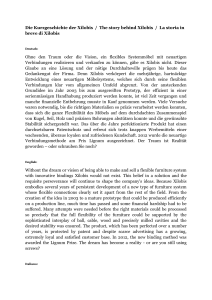
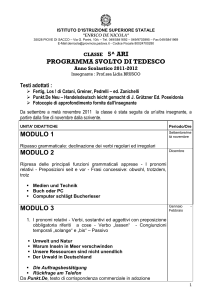

![Ricerca nr. 1 [MS WORD 395 KB]](http://s1.studylibit.com/store/data/000076742_1-2ede245e00e21c823e517529e1c3be46-300x300.png)
